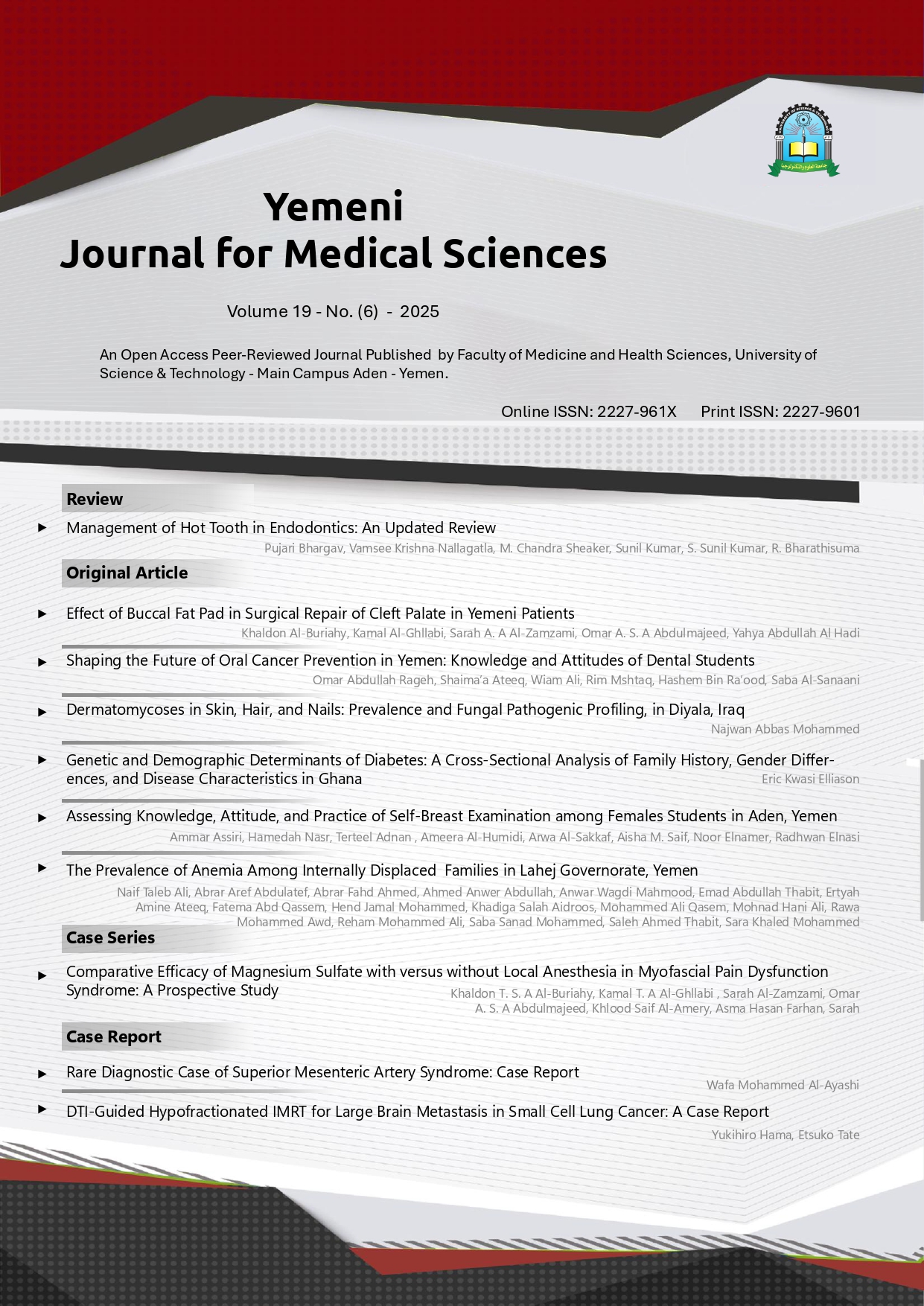Dermatomycoses in Skin, Hair, and Nails: Prevalence and Fungal Pathogenic Profiling, in Diyala, Iraq
##plugins.themes.bootstrap3.article.main##
Abstract
Background: Dermatomycoses refer to fungal infections affecting the skin and its appendages, such as hair and nails, it caused primarily by dermatophytes and yeasts, and occasionally by molds.
Objective: This study aimed to investigate the prevalence of dermatomycosis including the identification of fungal species from infected skin, hair, and nails in Diyala, Iraq.
Methods: Fifty samples of skin, hair and nails were collected from patients with dermal infections in Ba’aqubah teaching hospital and different private clinics in Diyala, Iraq, with different age groups (3-73 years). All samples were identified to detect the pathogenic fungi caused dermatomycosis infections.
Results: This study showed that 78% of samples were positive for dermatomycosis infections. Among samples collected from infected skin, 84% were positive, 57% of infected hair and 75% from infected nails. 89.3% of females included in this study were show positive results for dermatomycosis whereas males were 63.6%. Skin infections were more prevalent among females than males, whereas no significant differences were observed for hair and nail infections between genders. The 21–30 years age group showed the highest prevalence of dermatophycosis. Candida species were the most isolated species that cause dermatomycosis in skin and onychomycosis. Malassezia were isolated from skin and hair scalp, Trichosporon beigelii were isolated from two cases with white piedra, whereas Rhodotorula and Trichophyton mentagrophytes were isolated from one skin case infection for each.
Conclusion: Dermatomycosis can affect hair skin and nails in people with various age groups in both genders, Candida spp. and Malassezia were the most isolated yeasts affecting skin, and Candida was the most yeast caused onychomycosis.
##plugins.themes.bootstrap3.article.details##
Dermatomycosis, Onychomycosis, Malassezia, Trichophyton, Trichosporon

This work is licensed under a Creative Commons Attribution 4.0 International License.
YJMS publishes Open Access articles under the Creative Commons Attribution (CC BY) license. If author(s) submit their manuscript for consideration by YJMS, they agree to have the CC BY license applied to their work, which means that it may be reused in any form provided that the author(s) and the journal are properly cited. Under this license, author(s) also preserve the right of reusing the content of their manuscript provided that they cite the YJMS.








